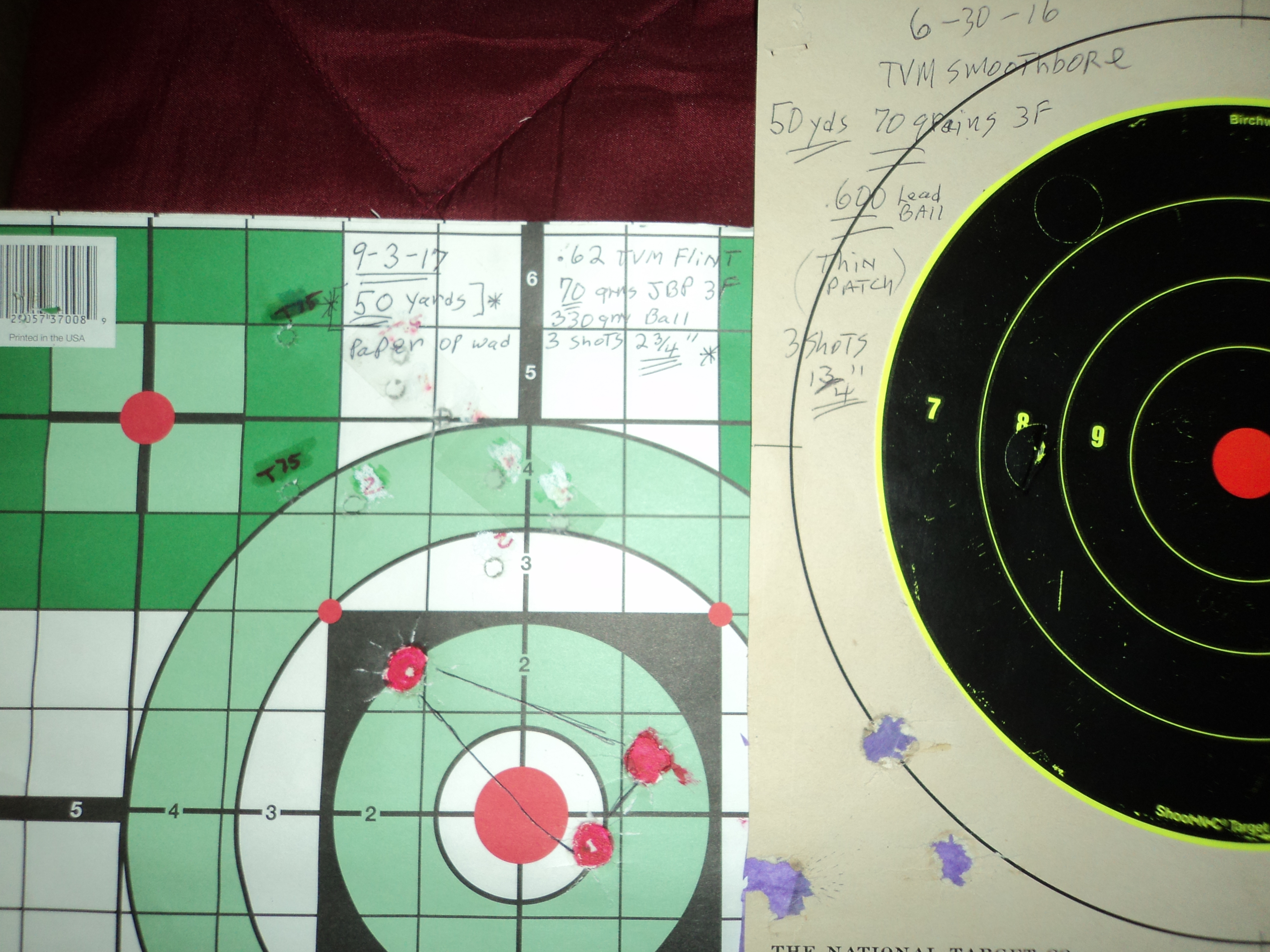Tight ball and patch combinations are a product of the gamesmanship at Friendship over the years. Tight ball and patch combinations weren't used in the old days like they are today.
Accuracy had a whole different meaning back in the day. With precision guns, scopes, aerodynamic bullets, range tables and laser range finders ect one big hole at two hundred yards is more then possible, it’s a standard
And we try to get that using two century old technology. We can’t get there but it’s the standard in the back of our mind.
Back in the day accurate was a gun that hit the target or very near it seen with open sights, and poor open sights at that.
Today at a smoothbore shoot one is striving for an accuracy never considered by shooters two centuries ago
A British official in HBC in the late 1840s told new men coming to Canada to get a smooth bore, as he said that out to sixty yards it will shoot as well as a rifle, and that was about the maximum one shot at game.
Well any rifle shooter that knows his gun, and is a good shot will on average shoot a smaller group at sixty yards with a rifle compared to a smoothie, but shooting game one could not offer any advantage.
When Britain showed off its new Baker rifle the shooter shot some fine targets, and everybody ohhed and awed over it.
Fine shooting it was, and I would be proud of it, but it sure wouldn’t win a ribbon at state or National shoots, might not win at the local beer drinkers and smoke makers club.
This isn’t to knock getting the best you can from your gun, and we try ideas they never knew.
I mostly shoot traditional or a PRB in mine, but accept that I’m not getting the very best I could if I upped my game. At least twenty years ago when I shot a rifle better then I can today. However I could up my game and not do any better in the way I use my gun.










